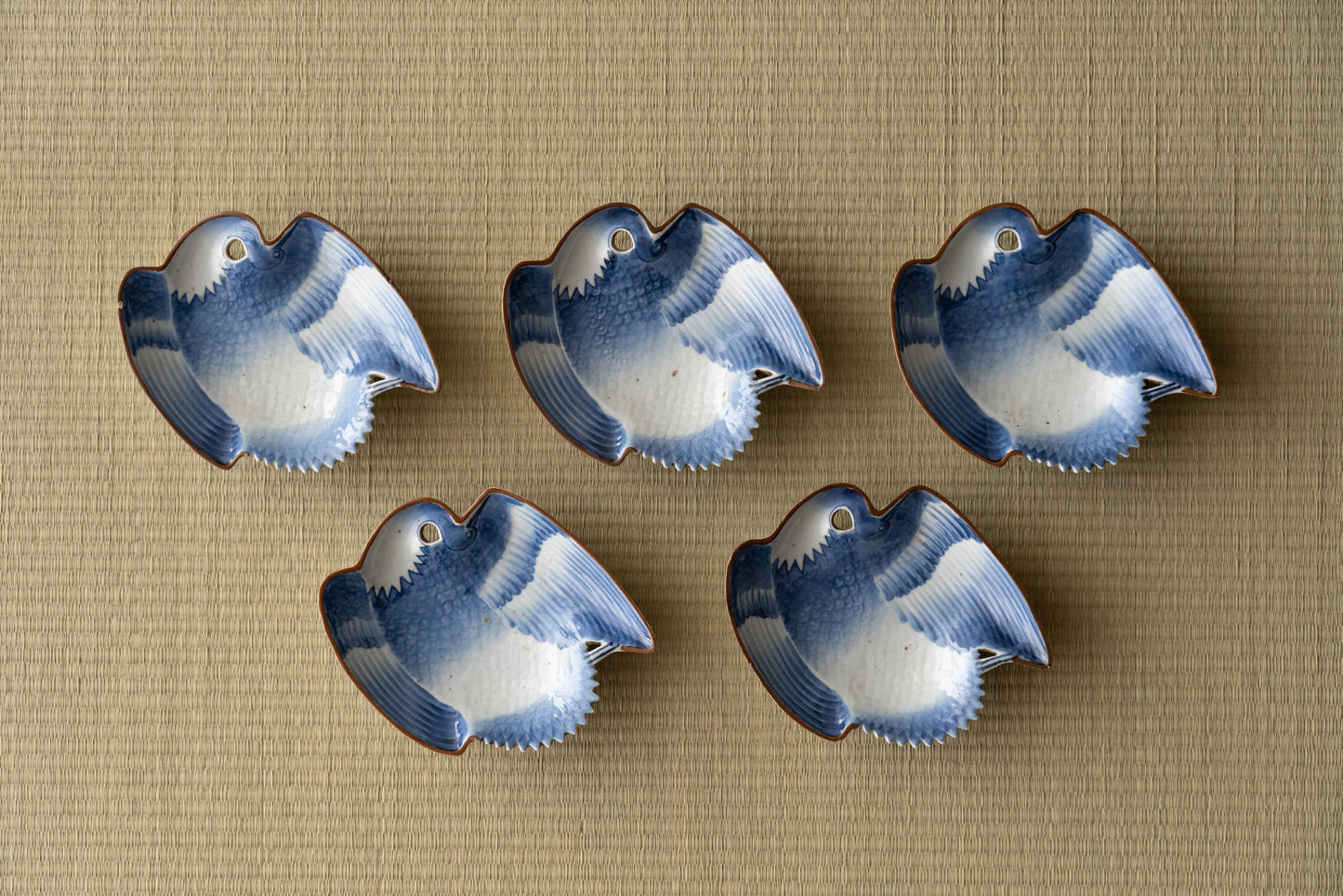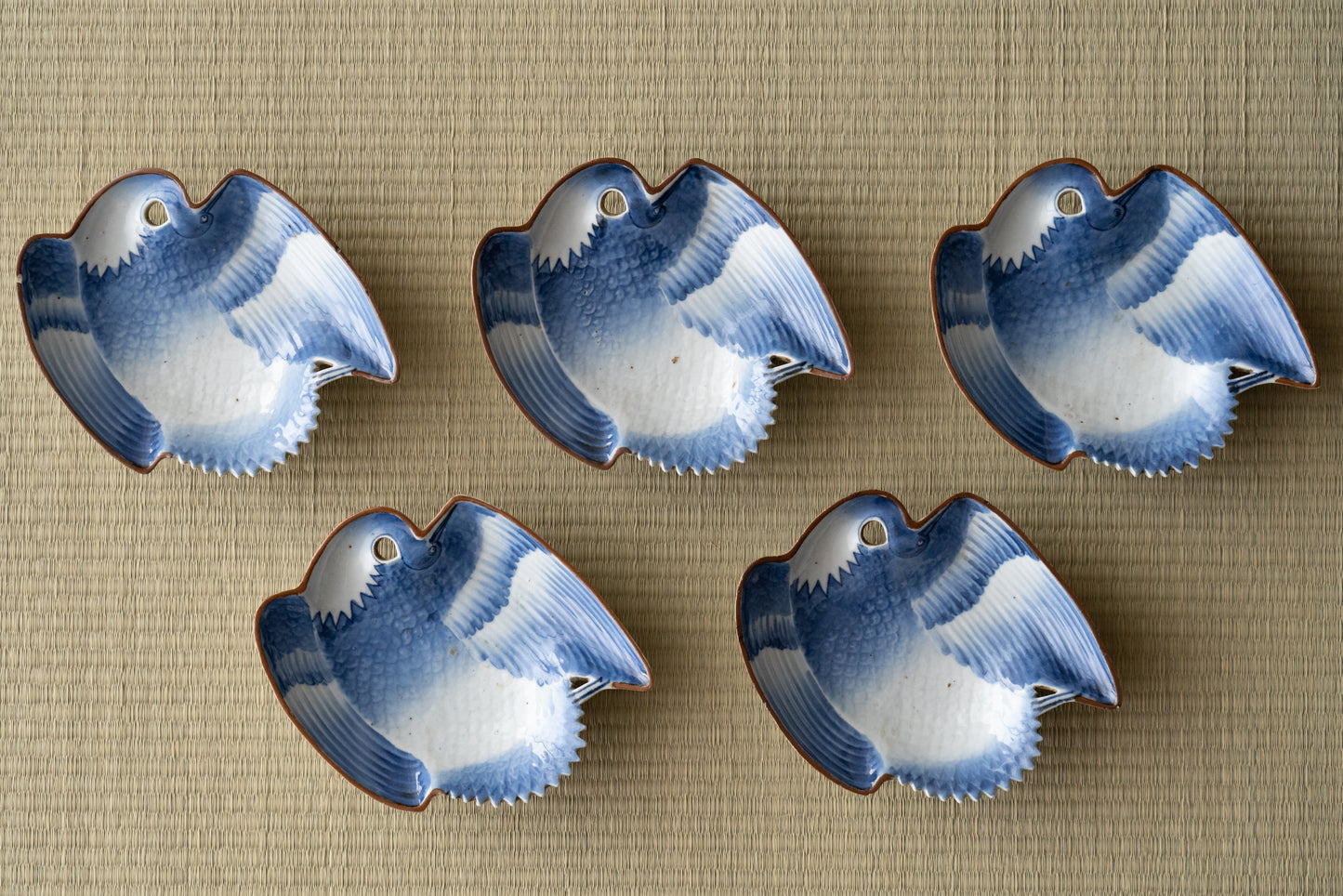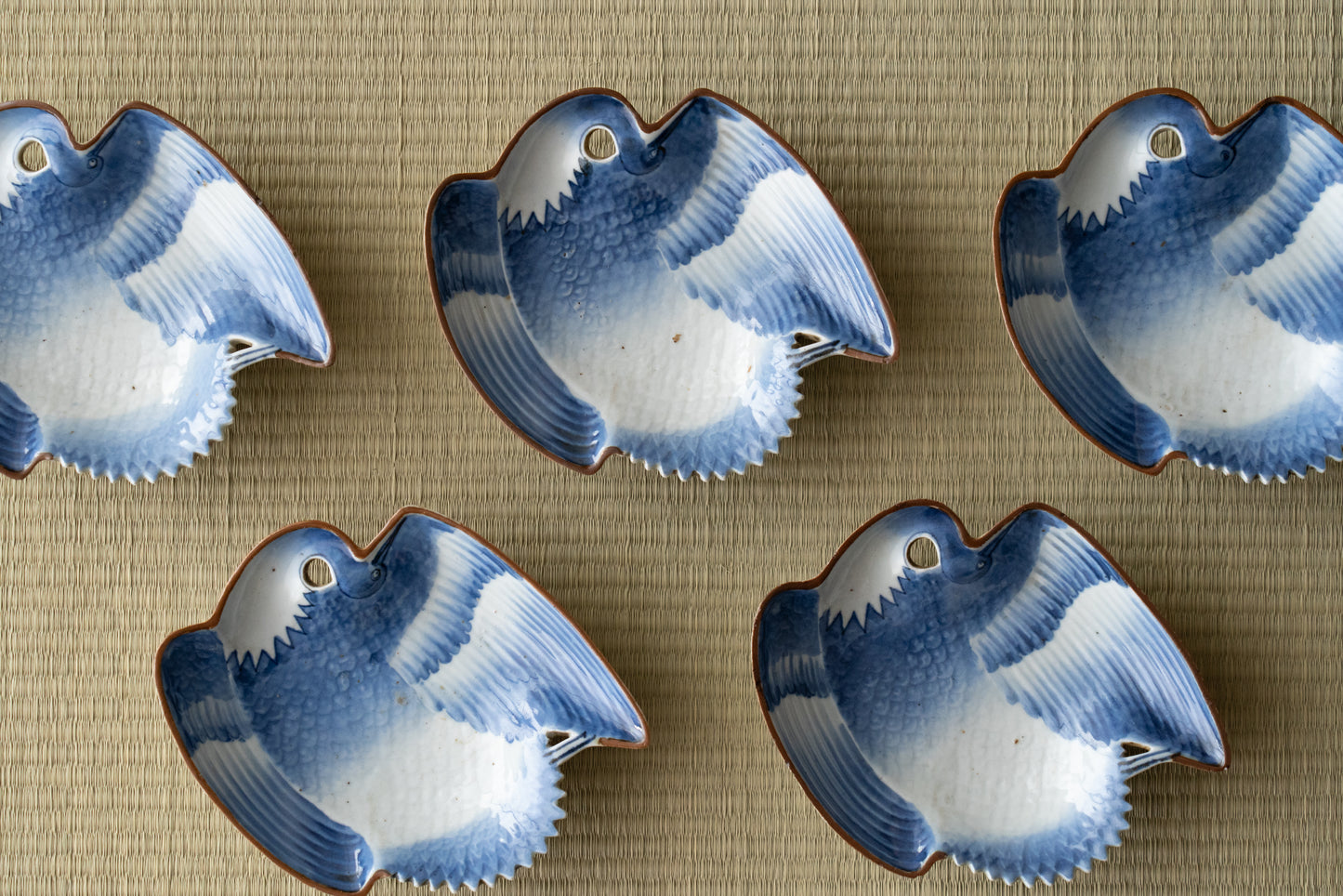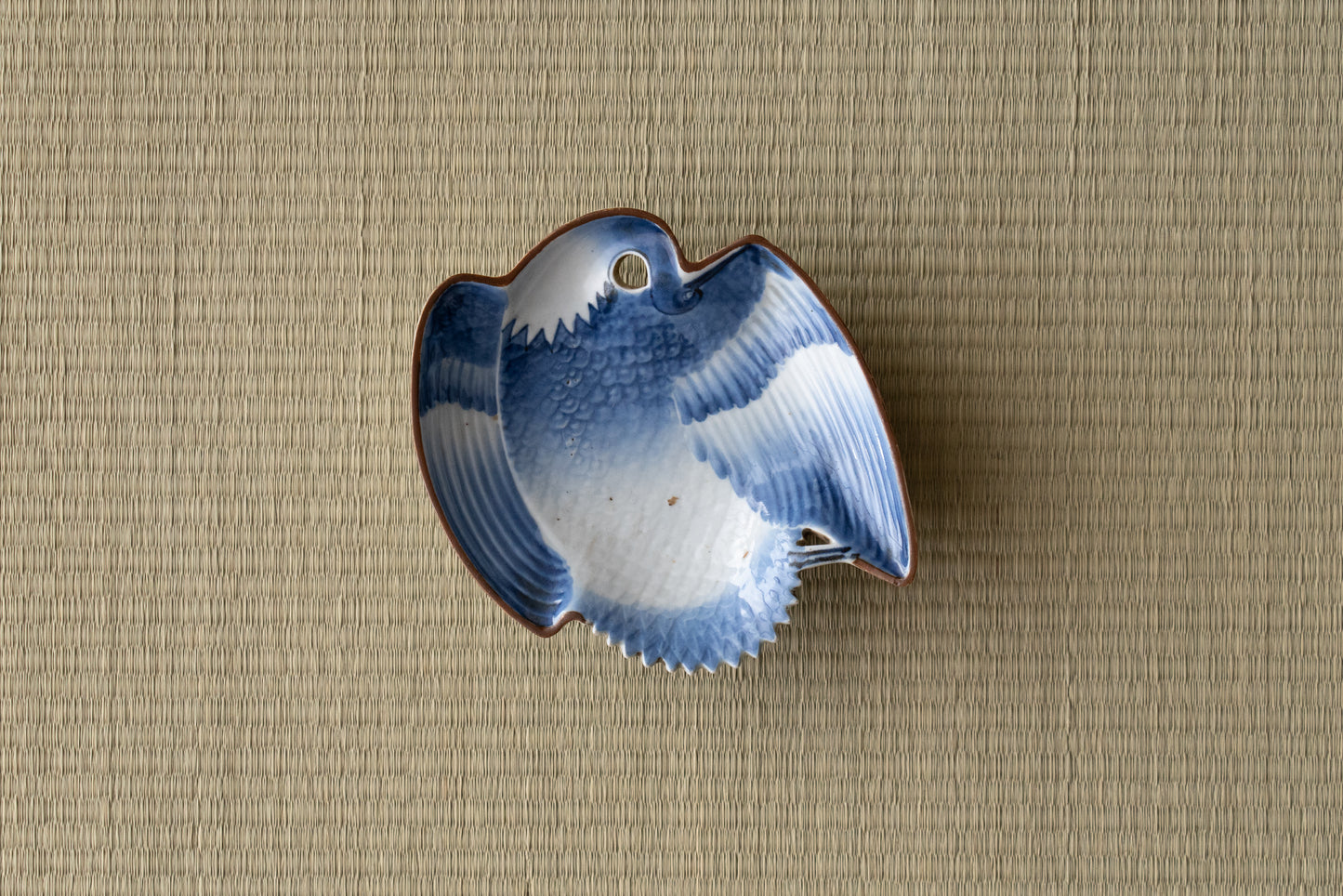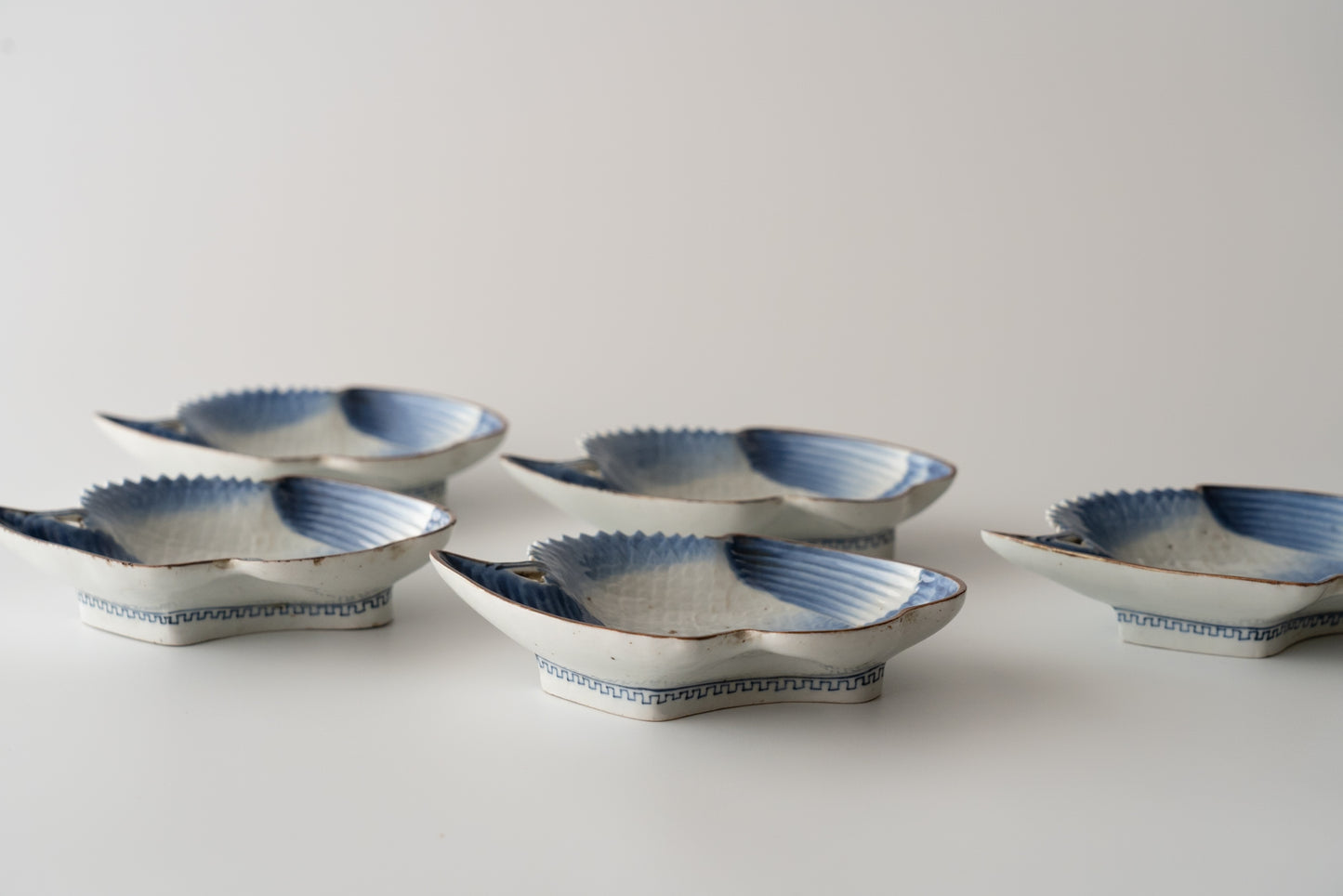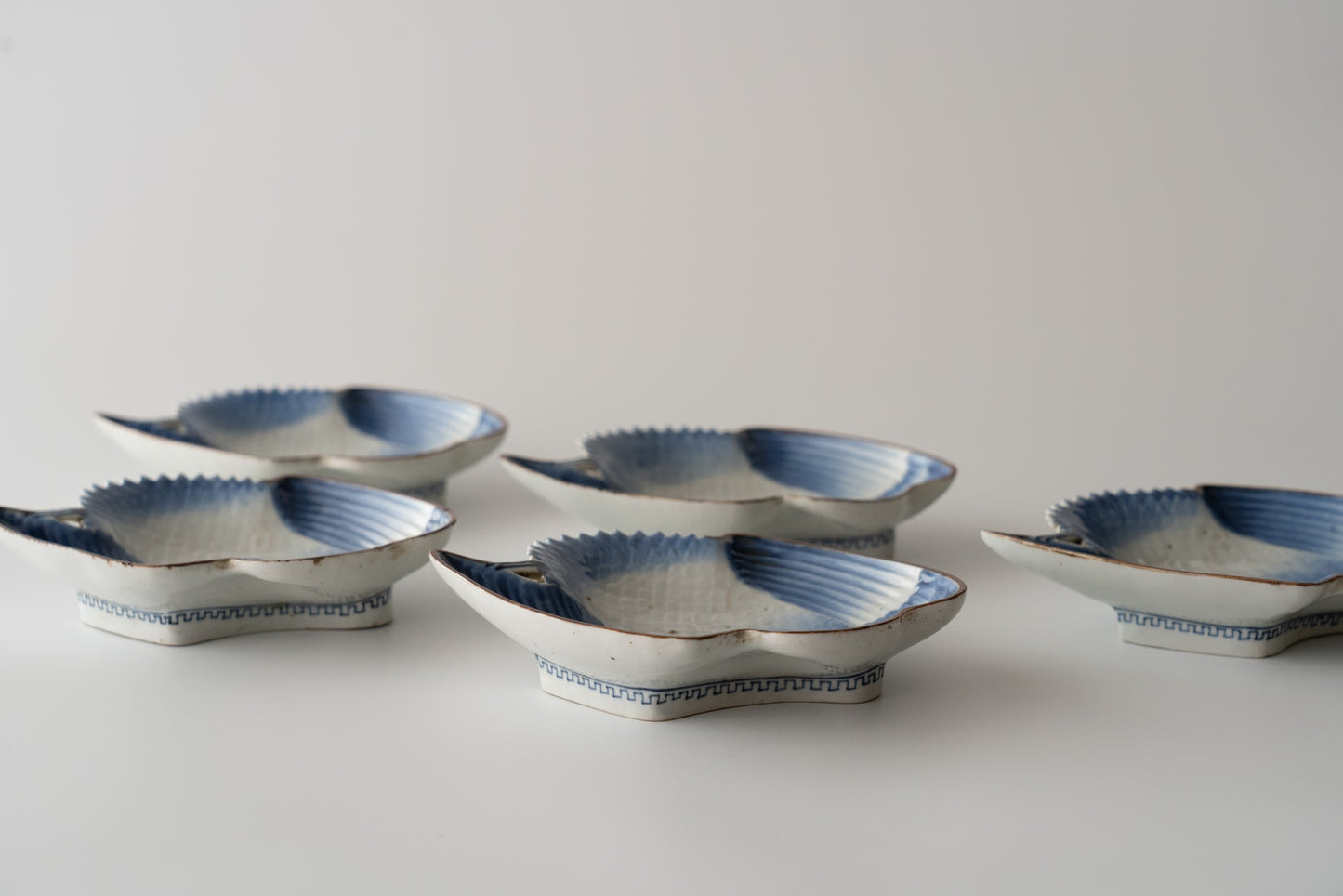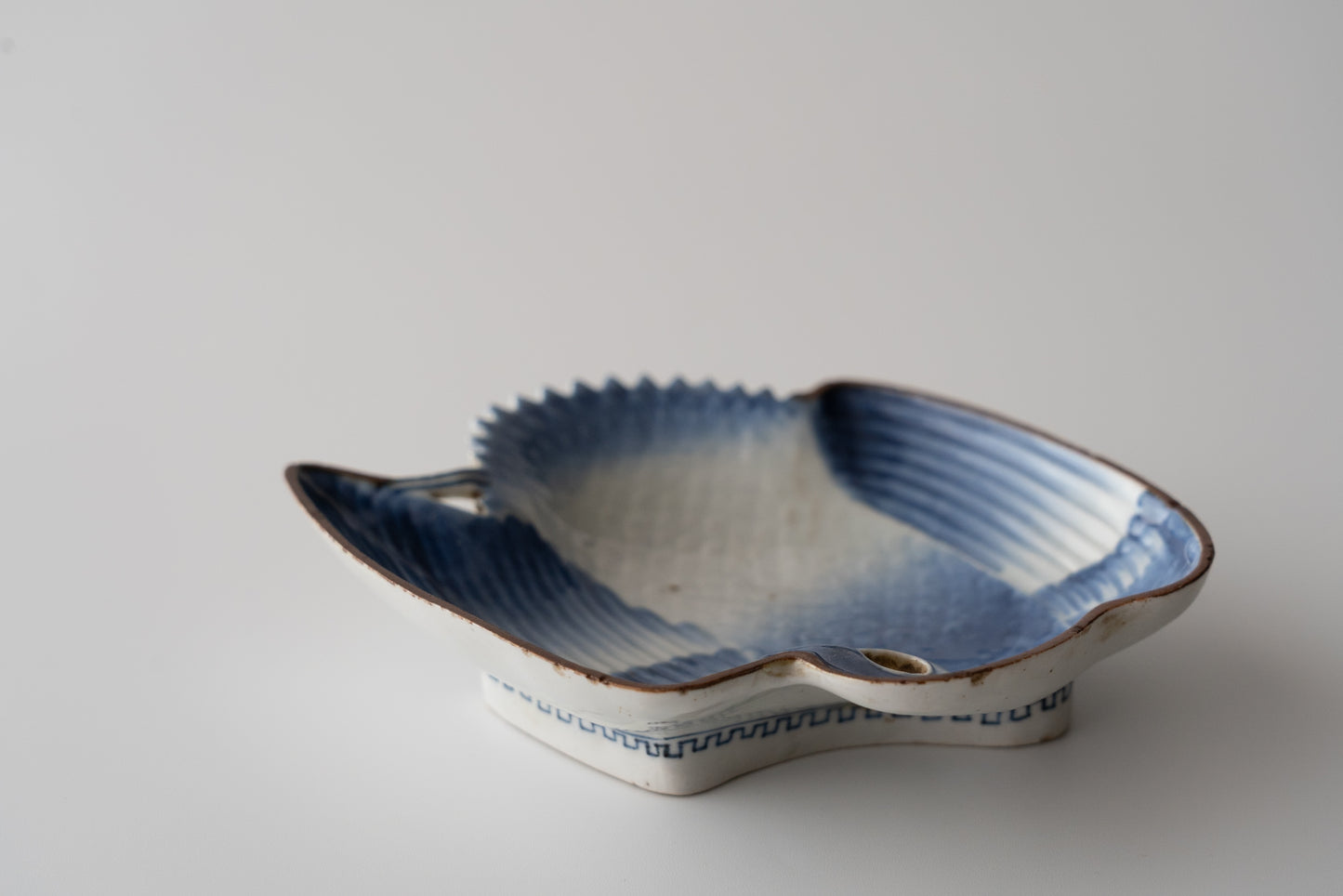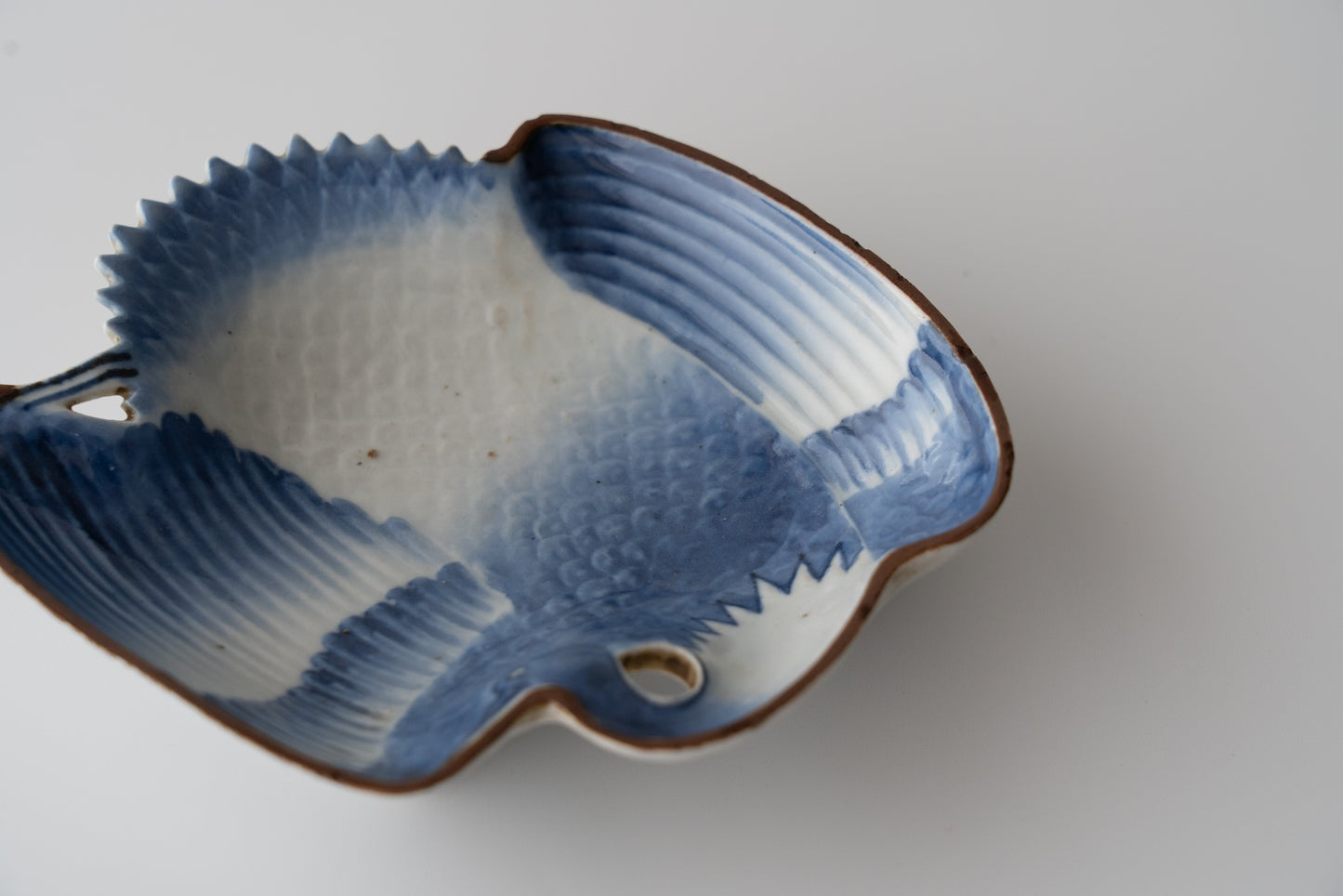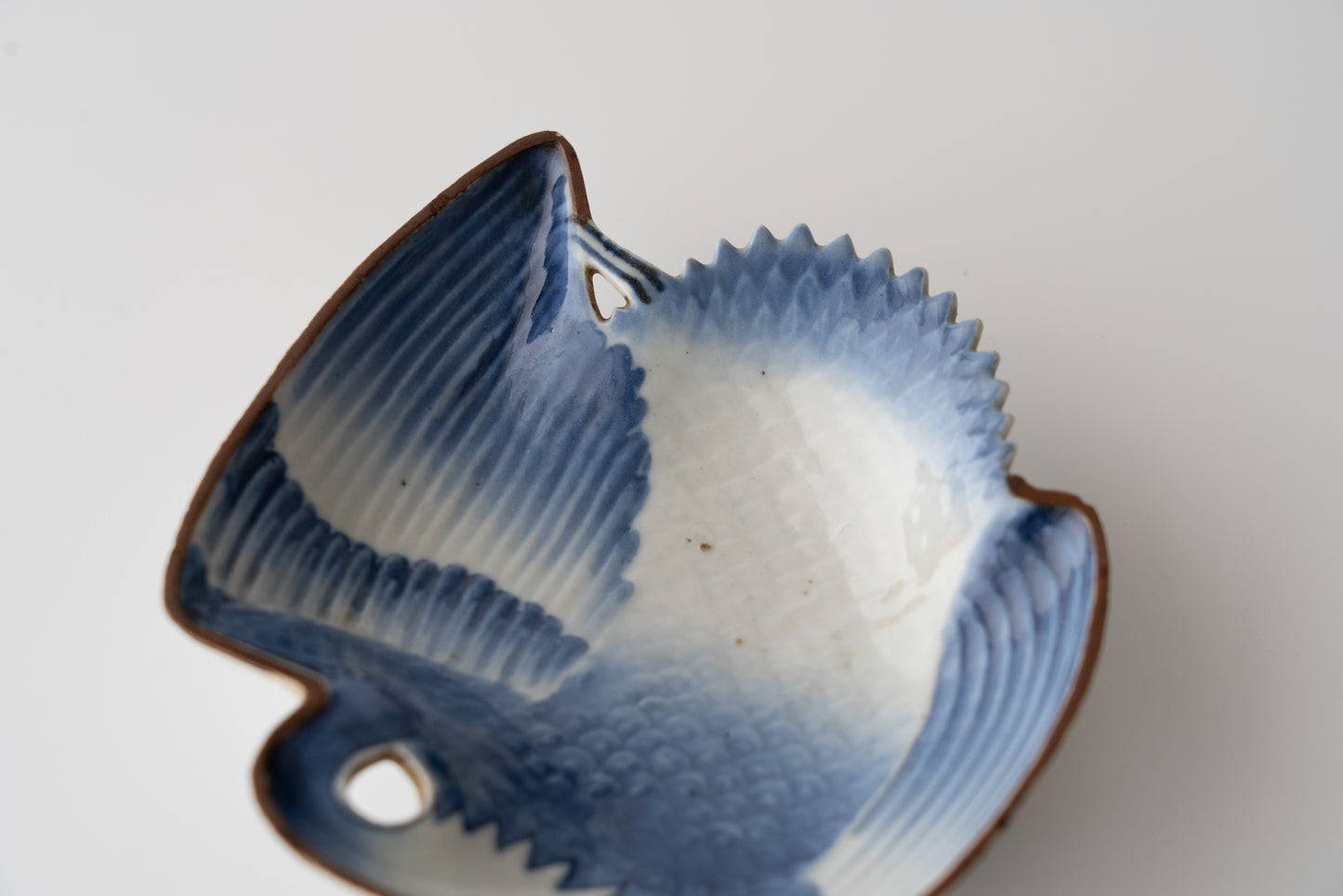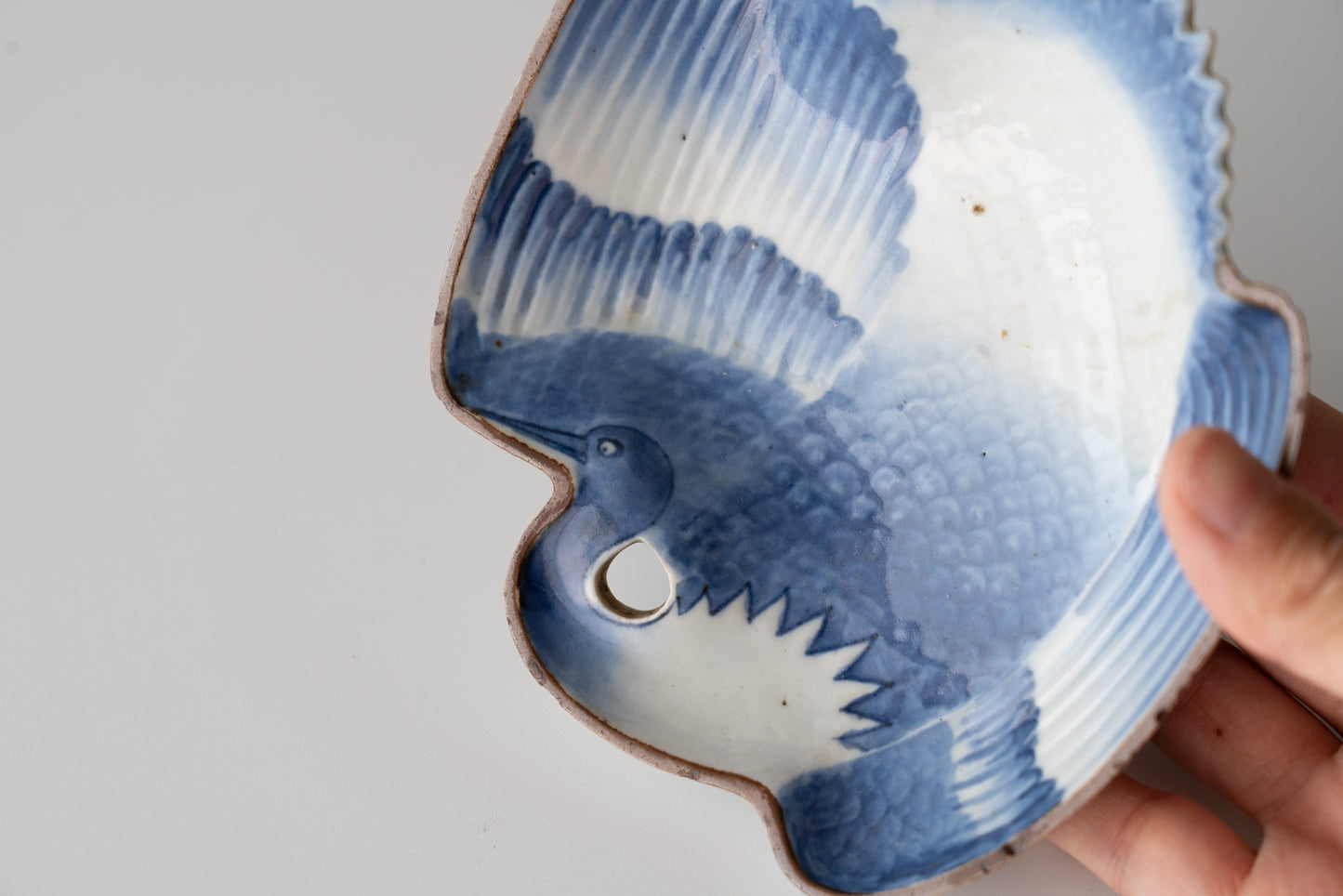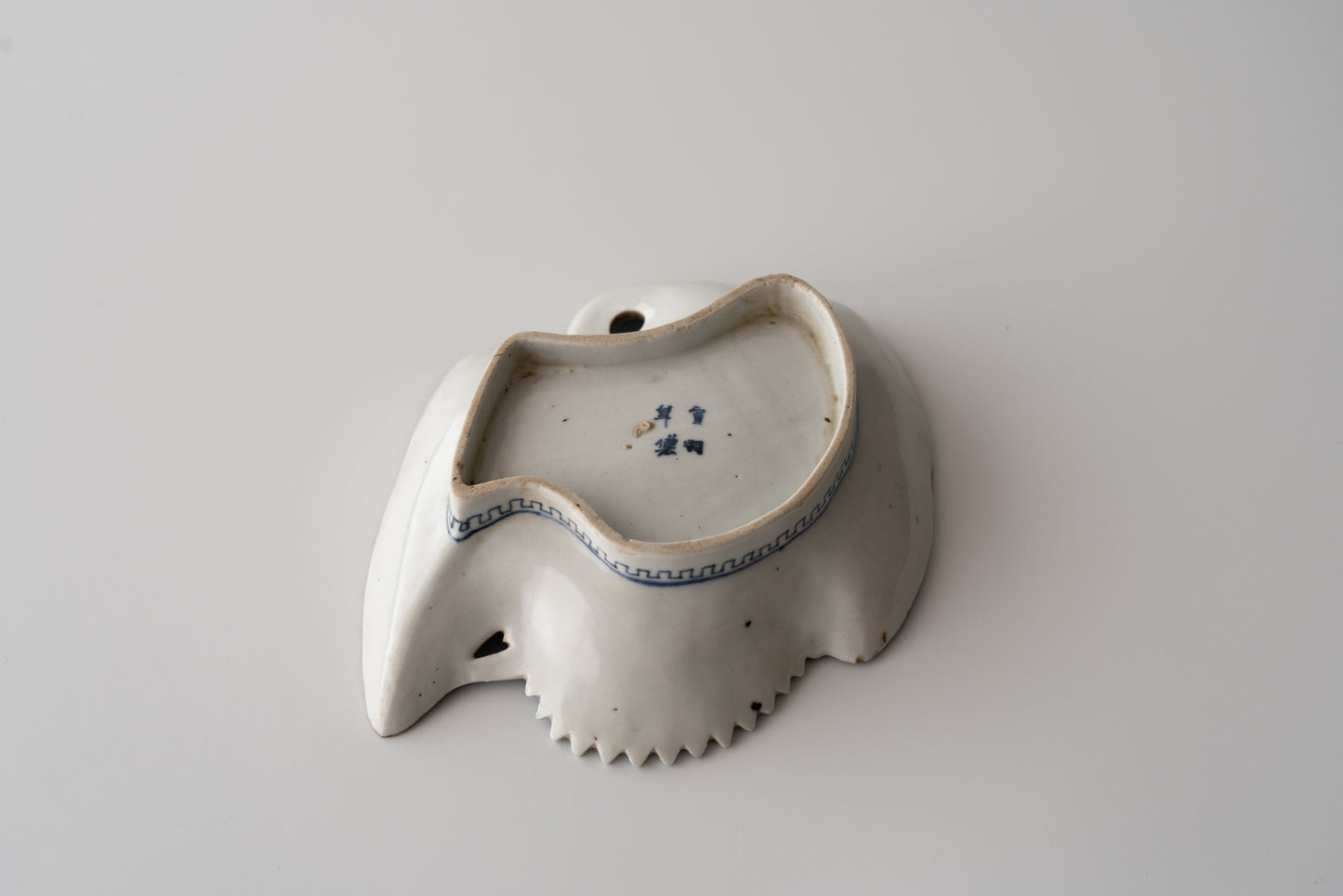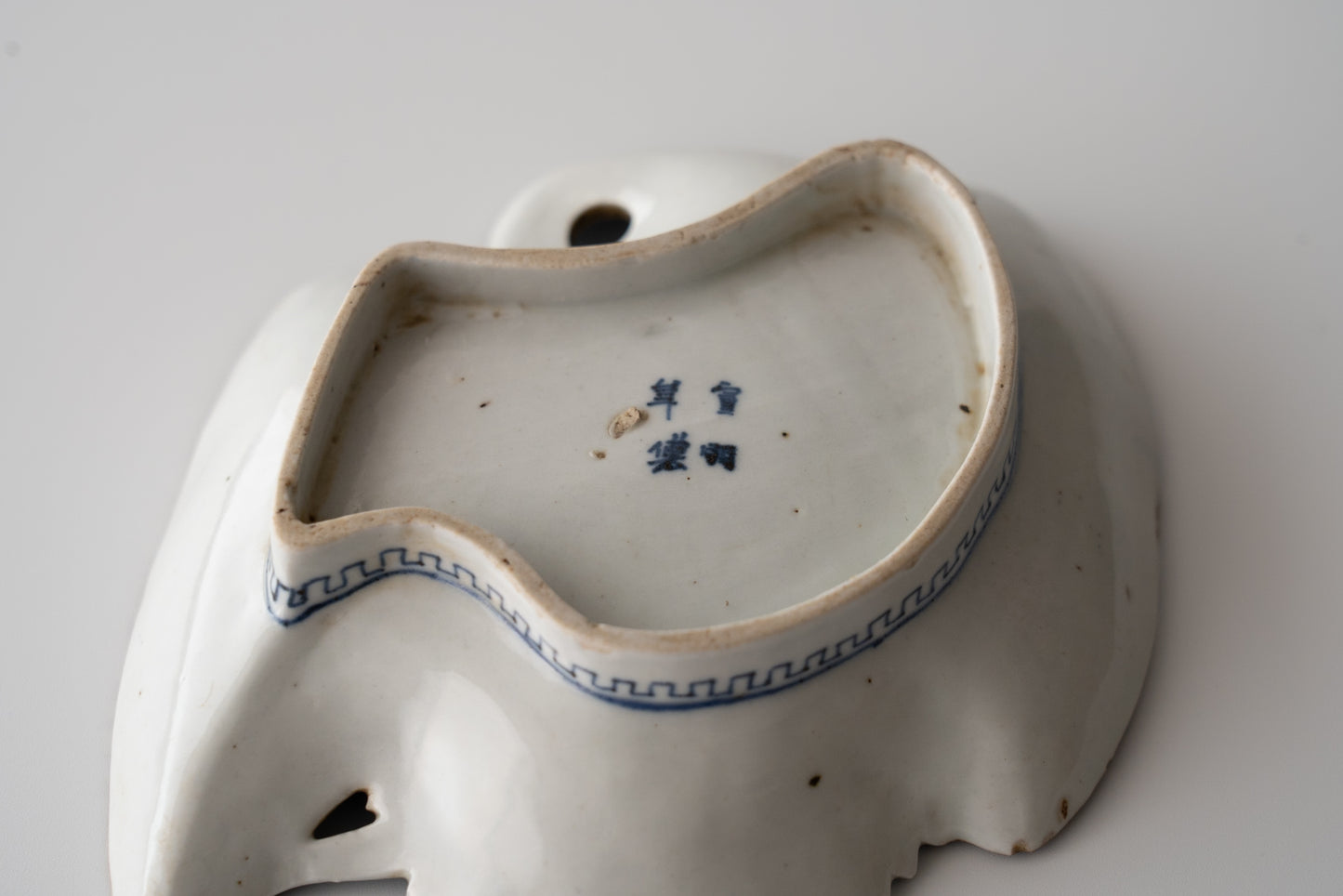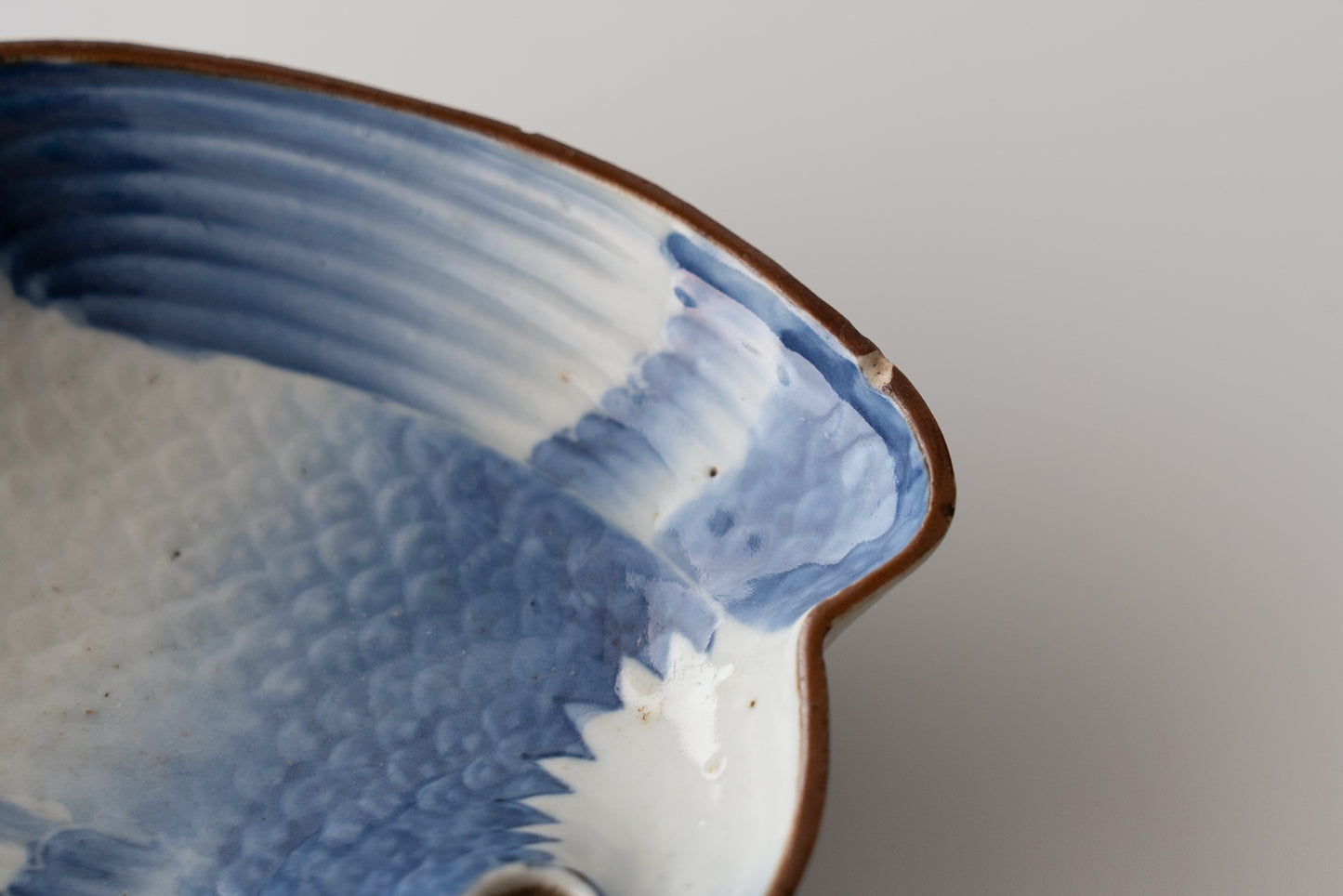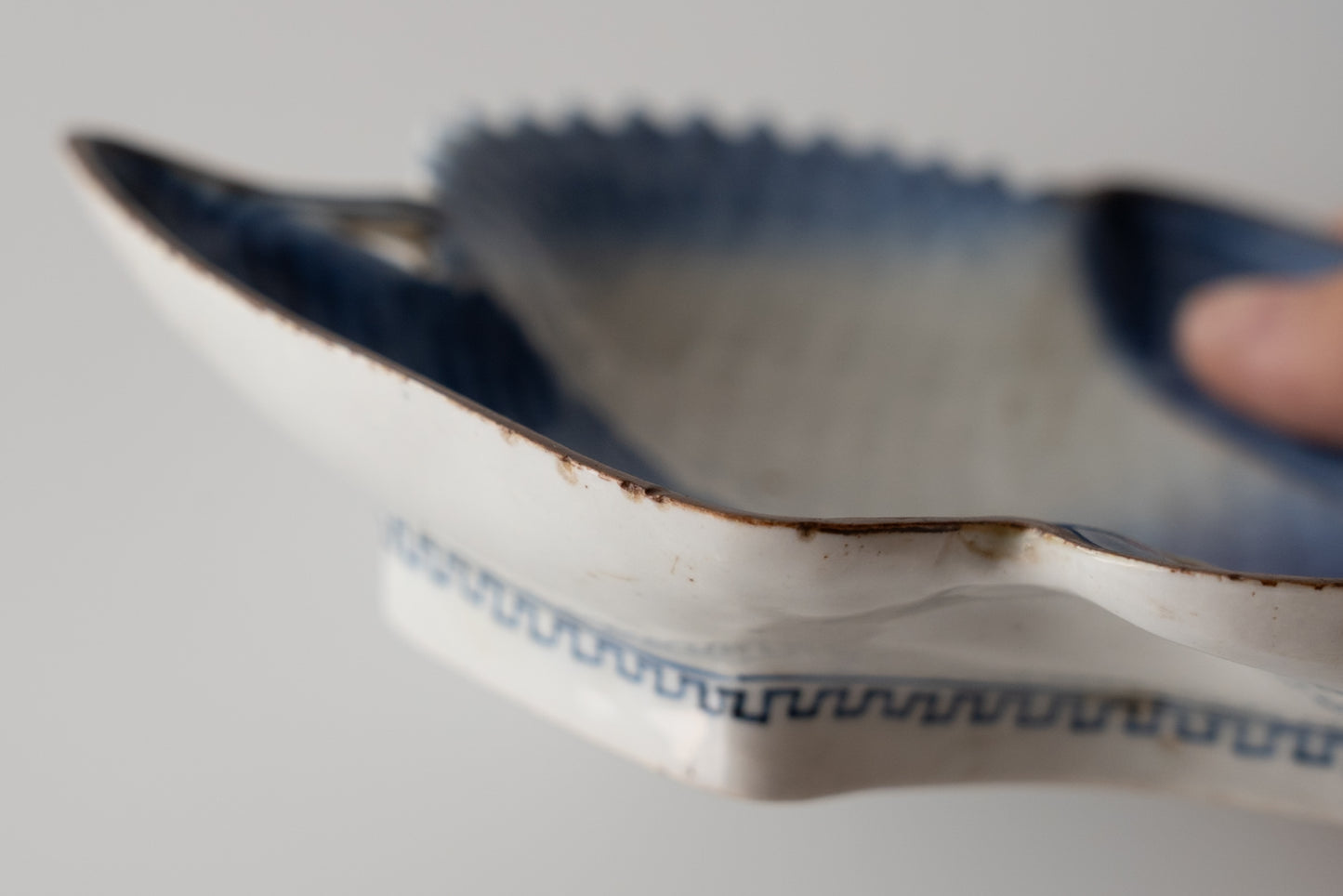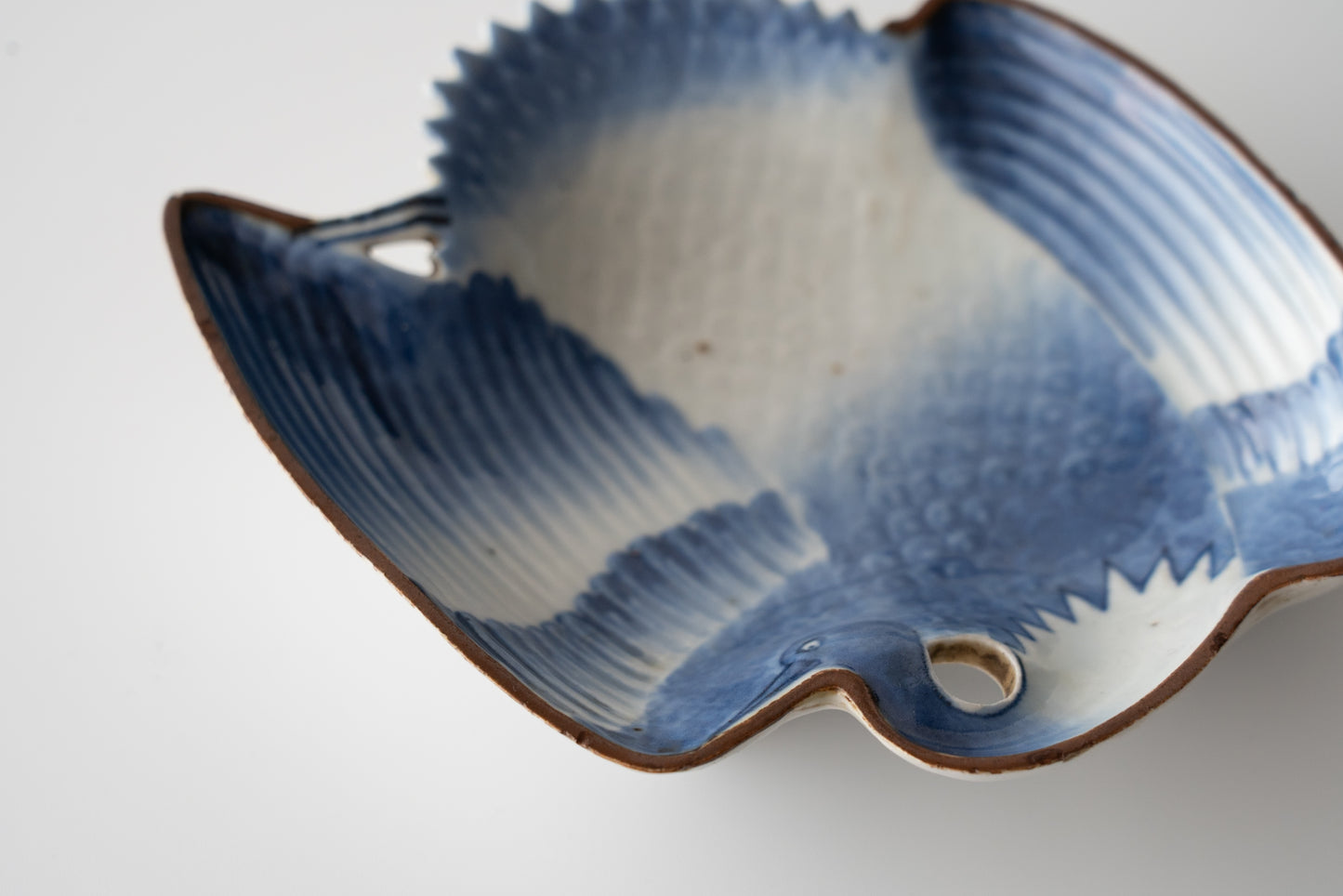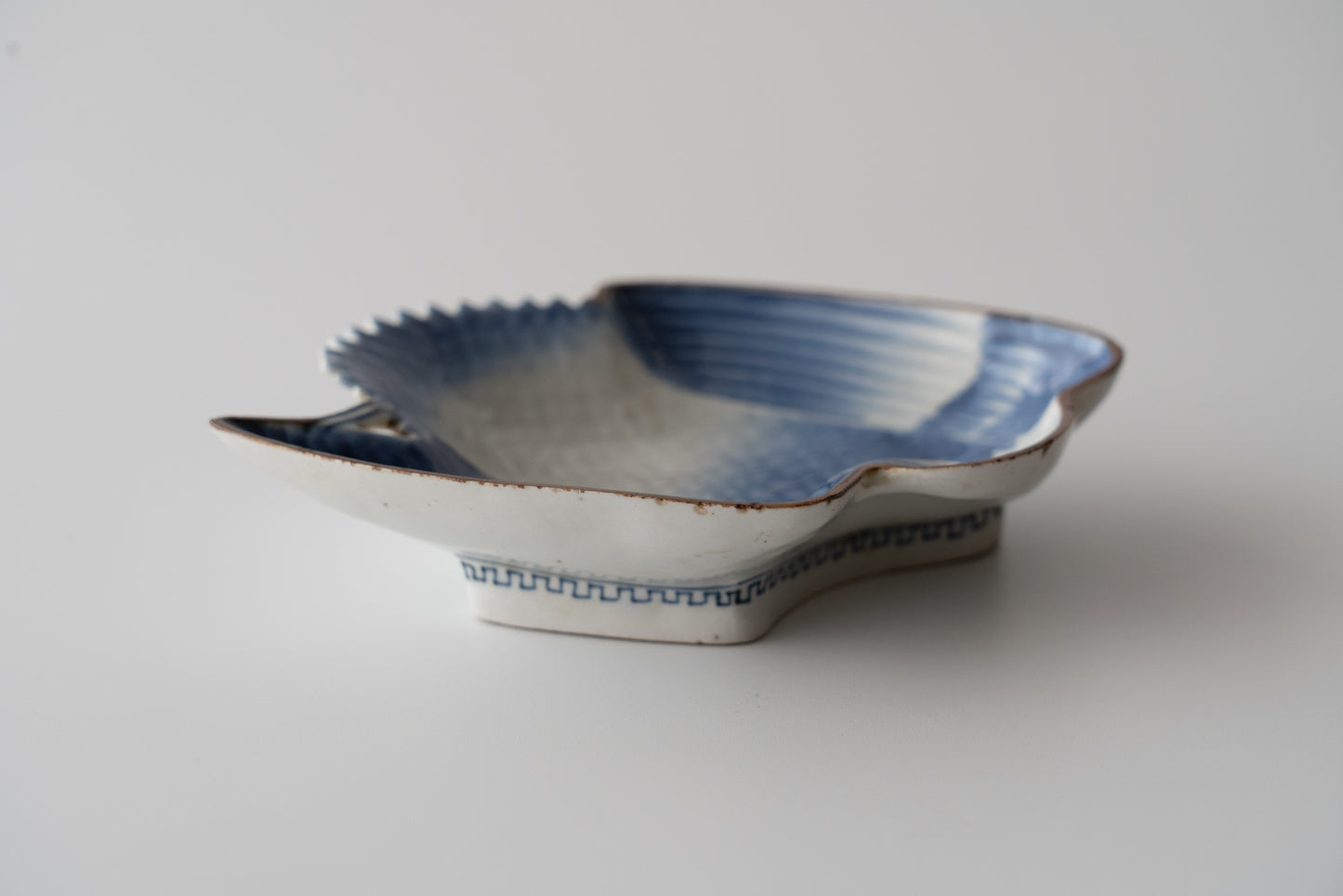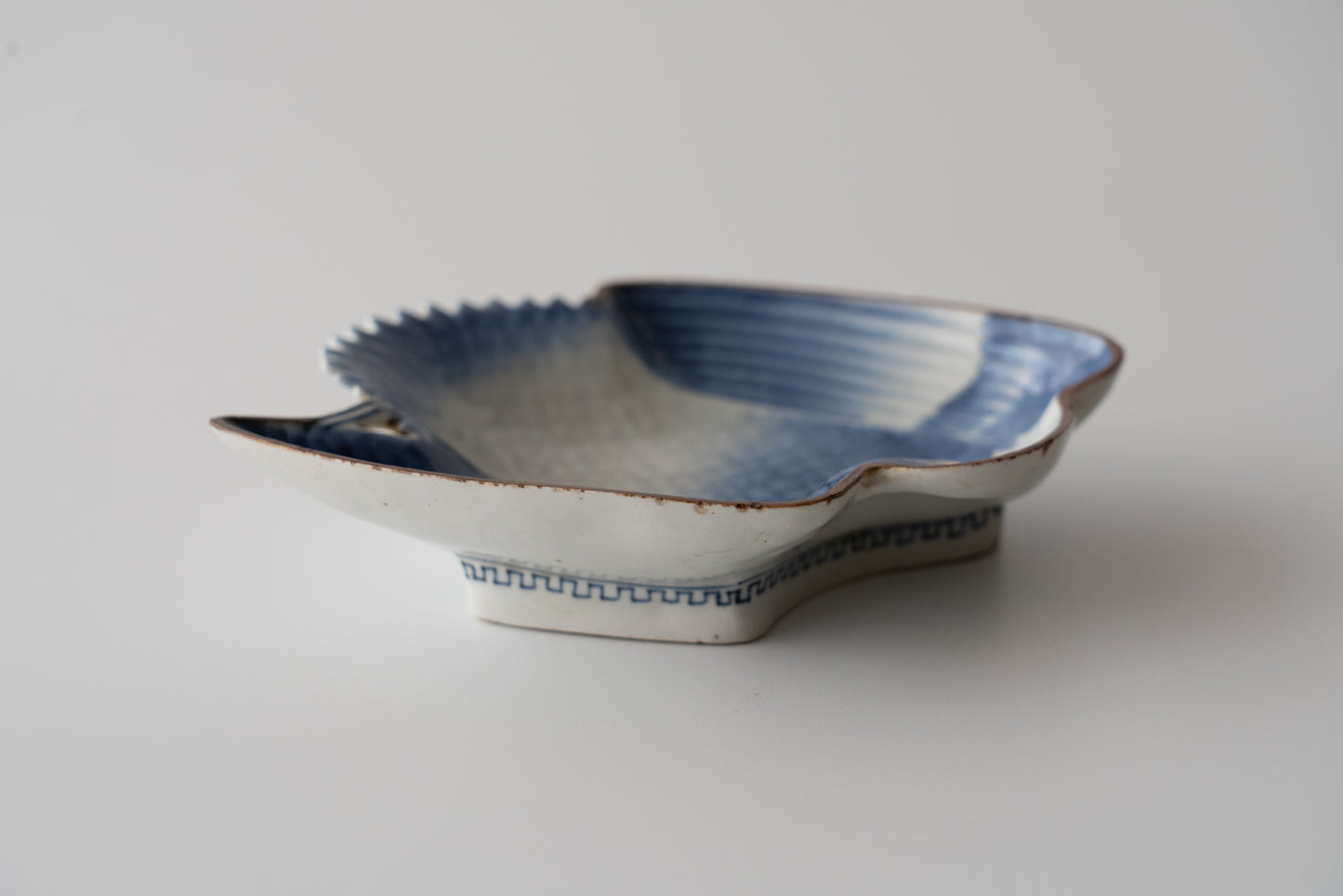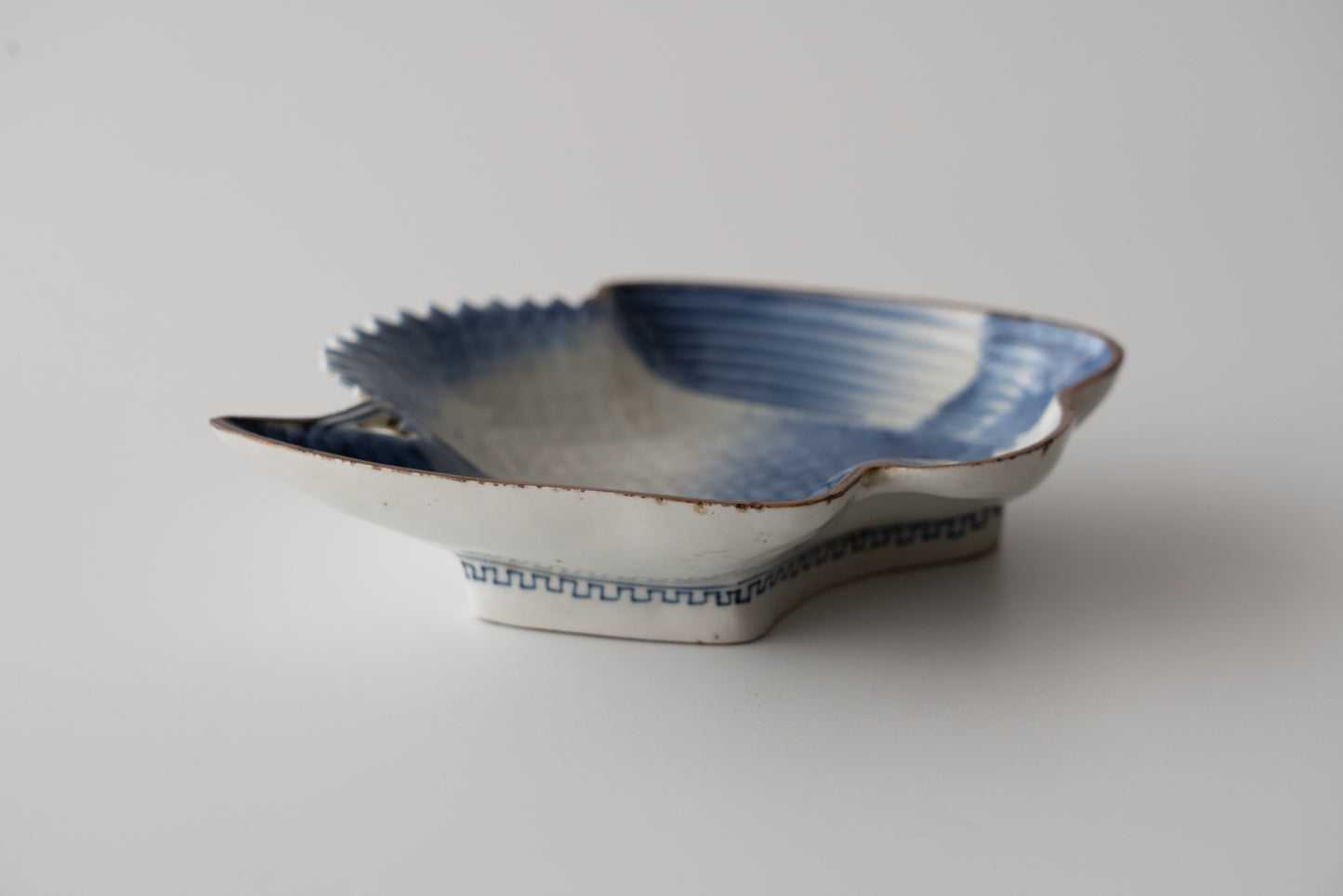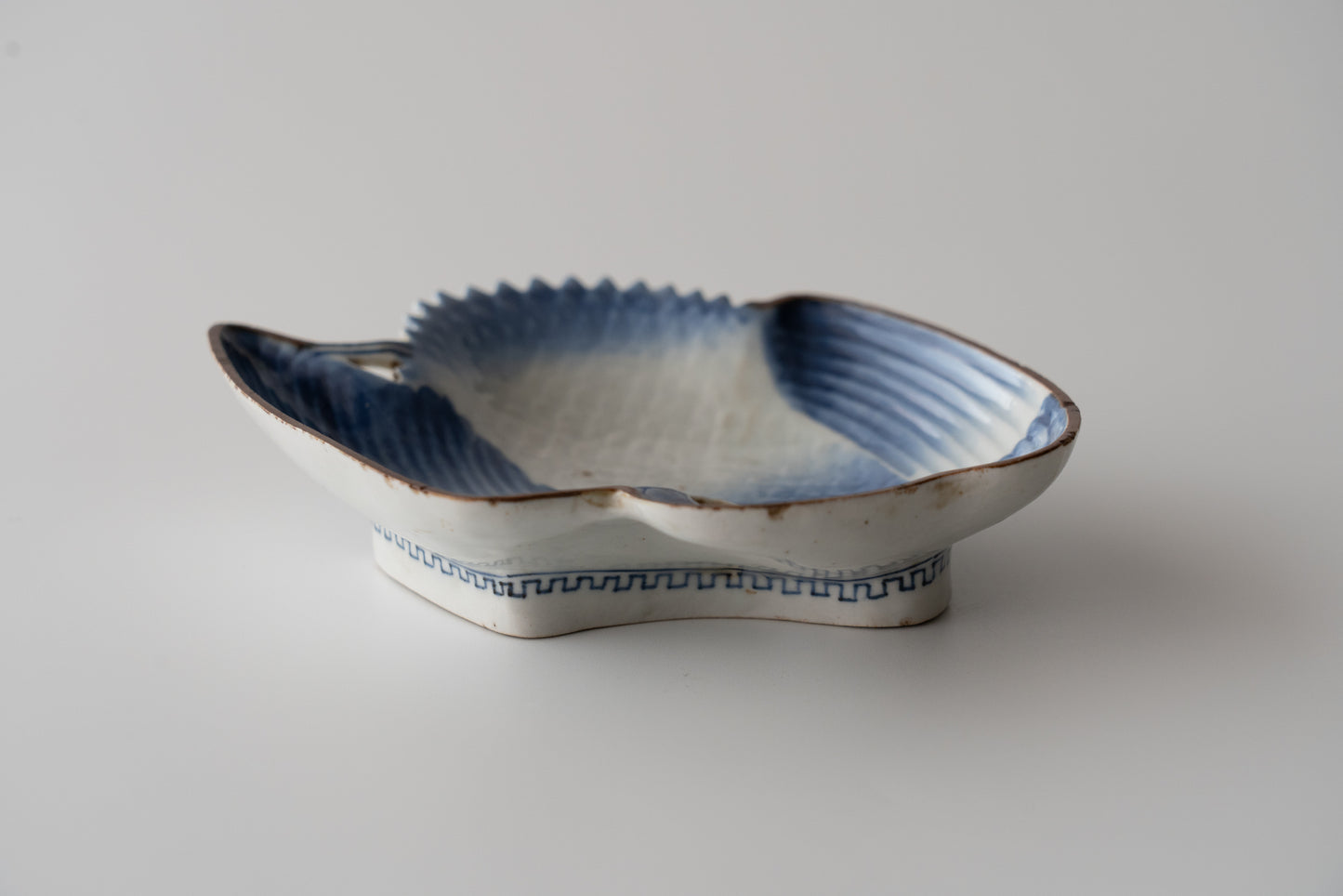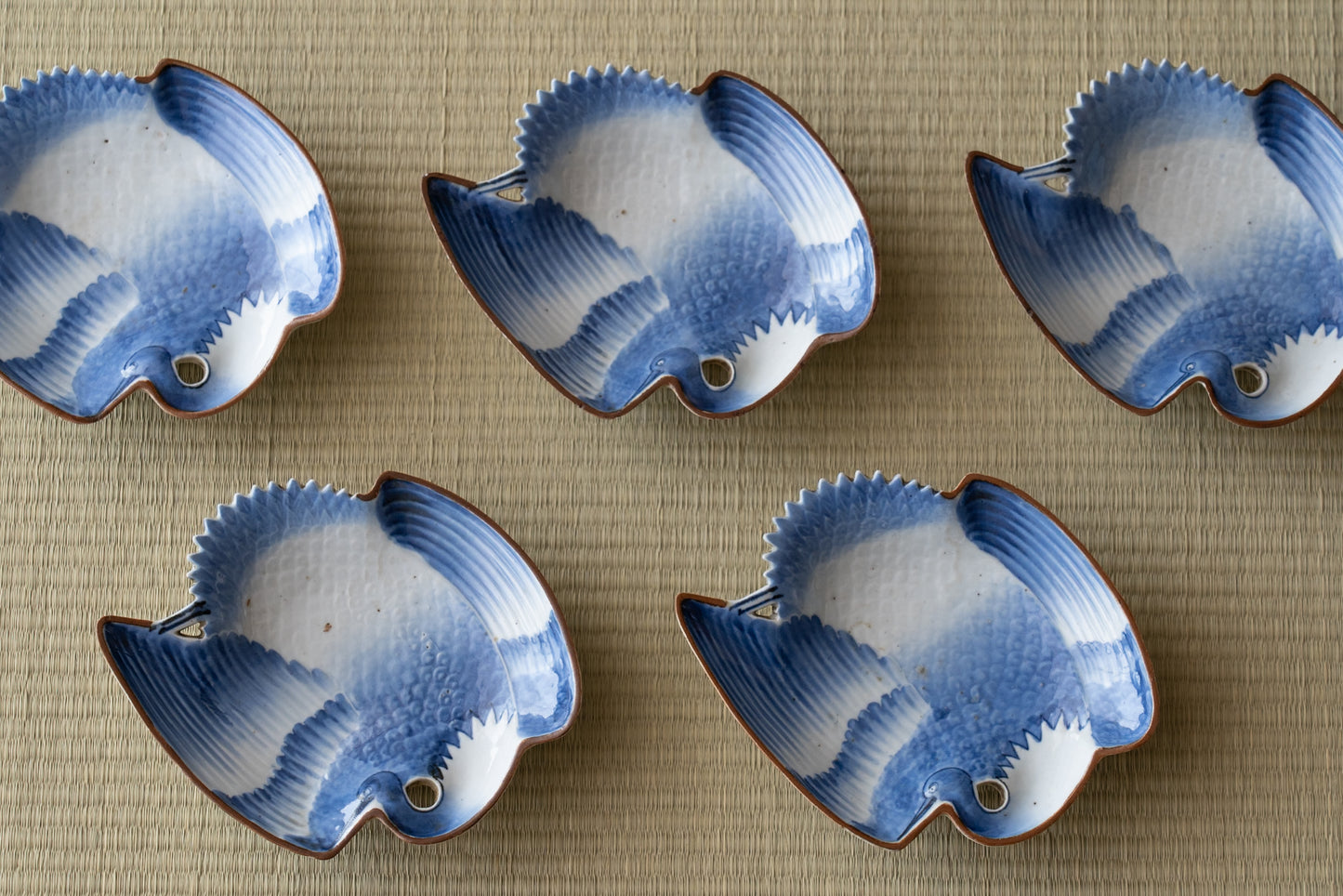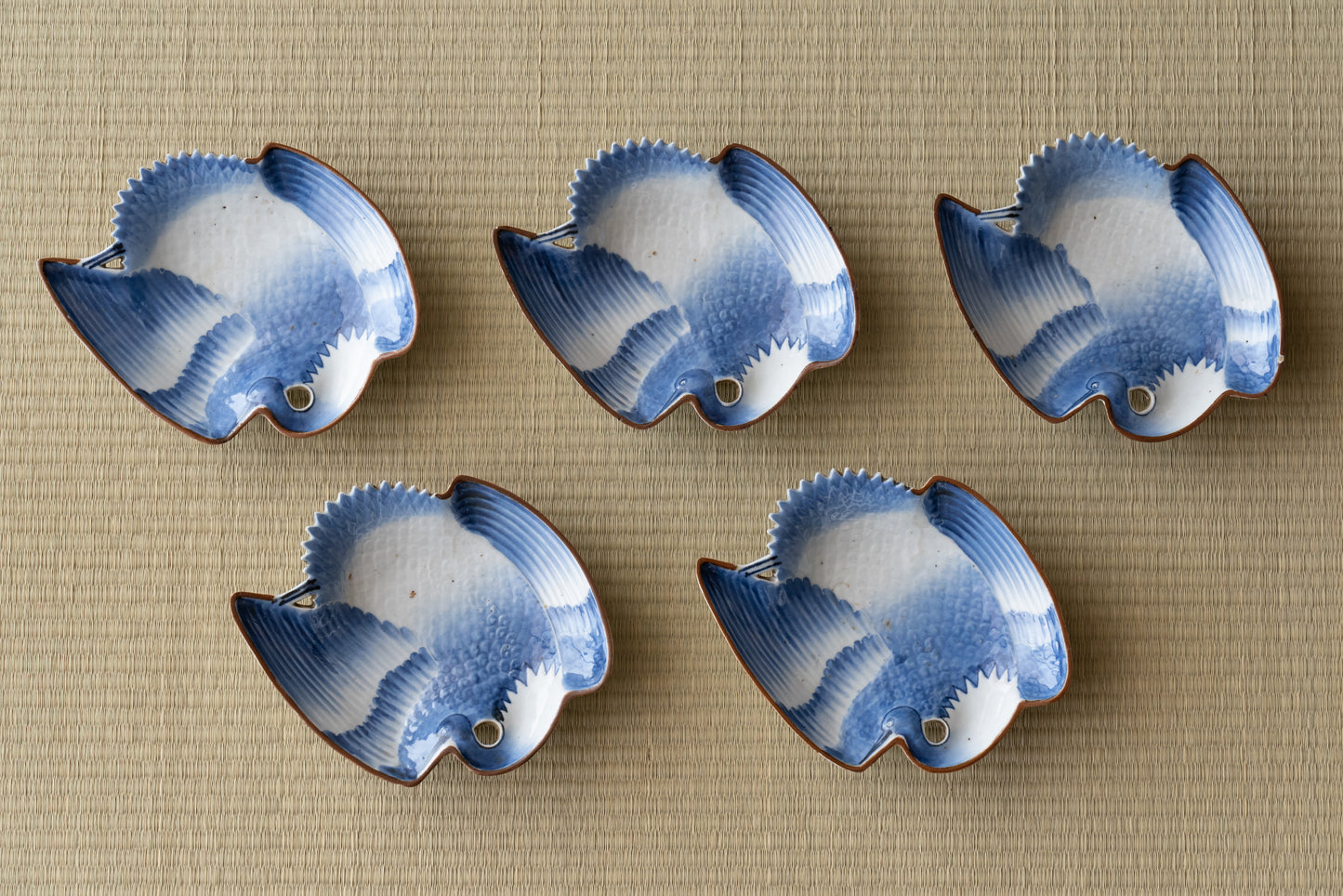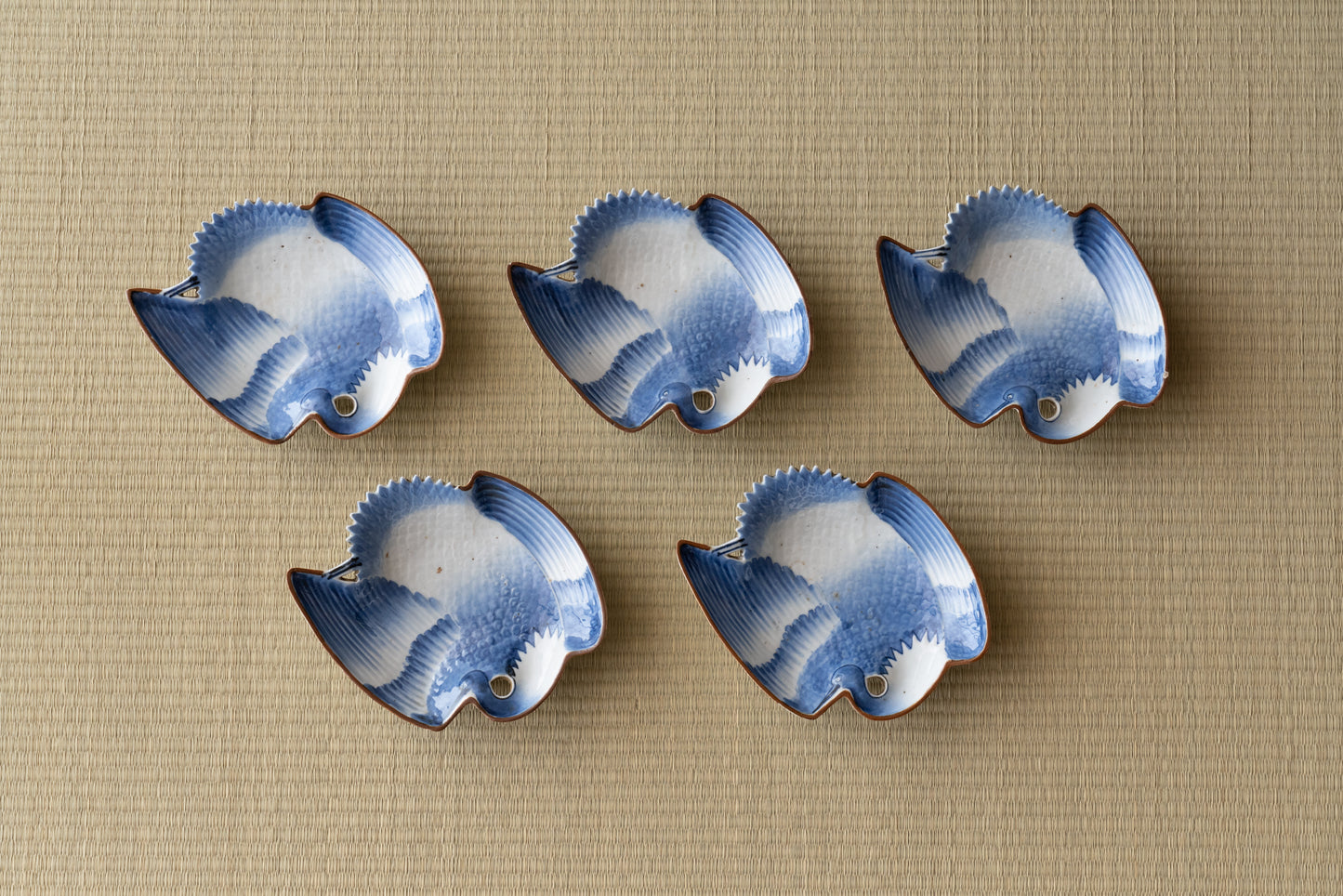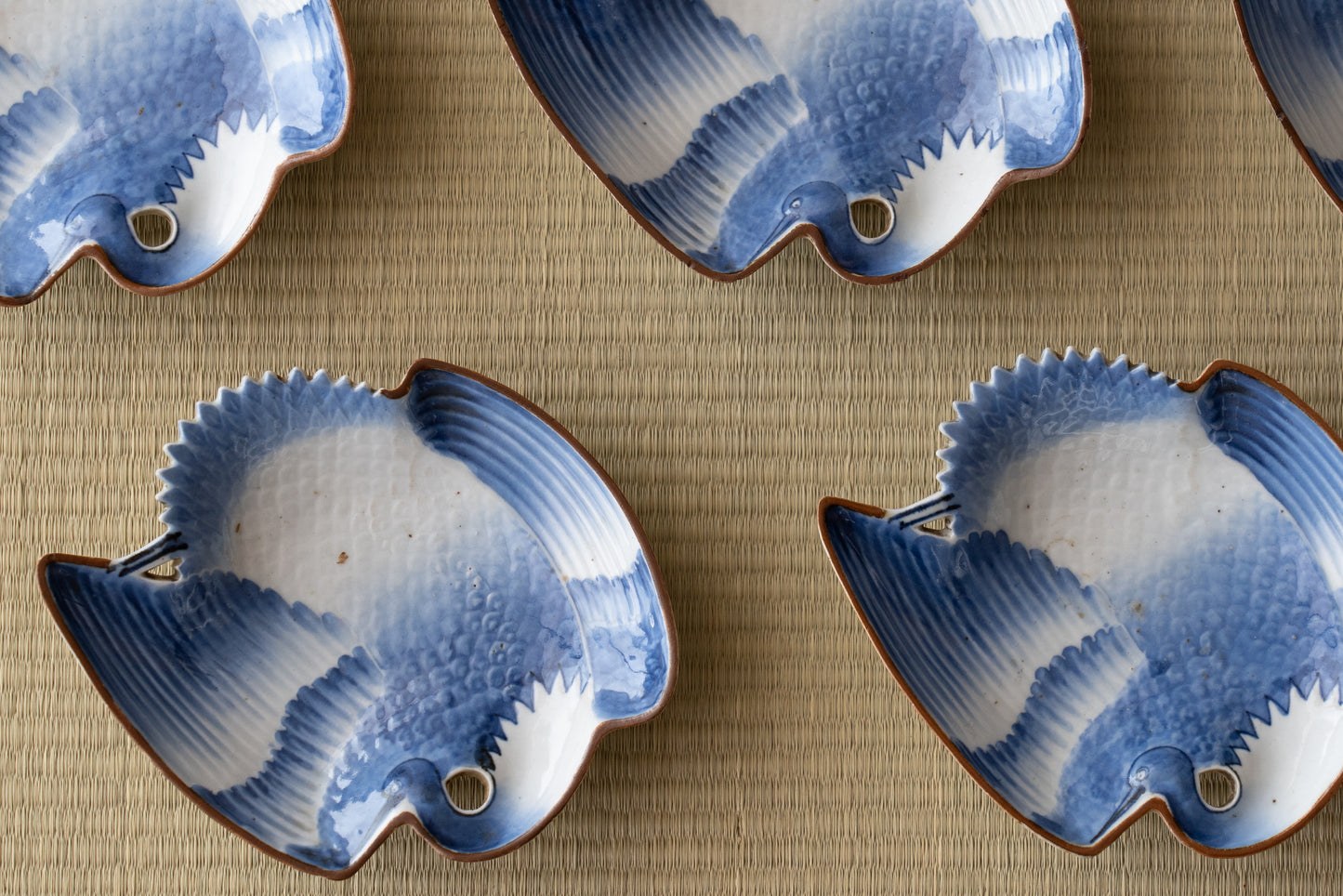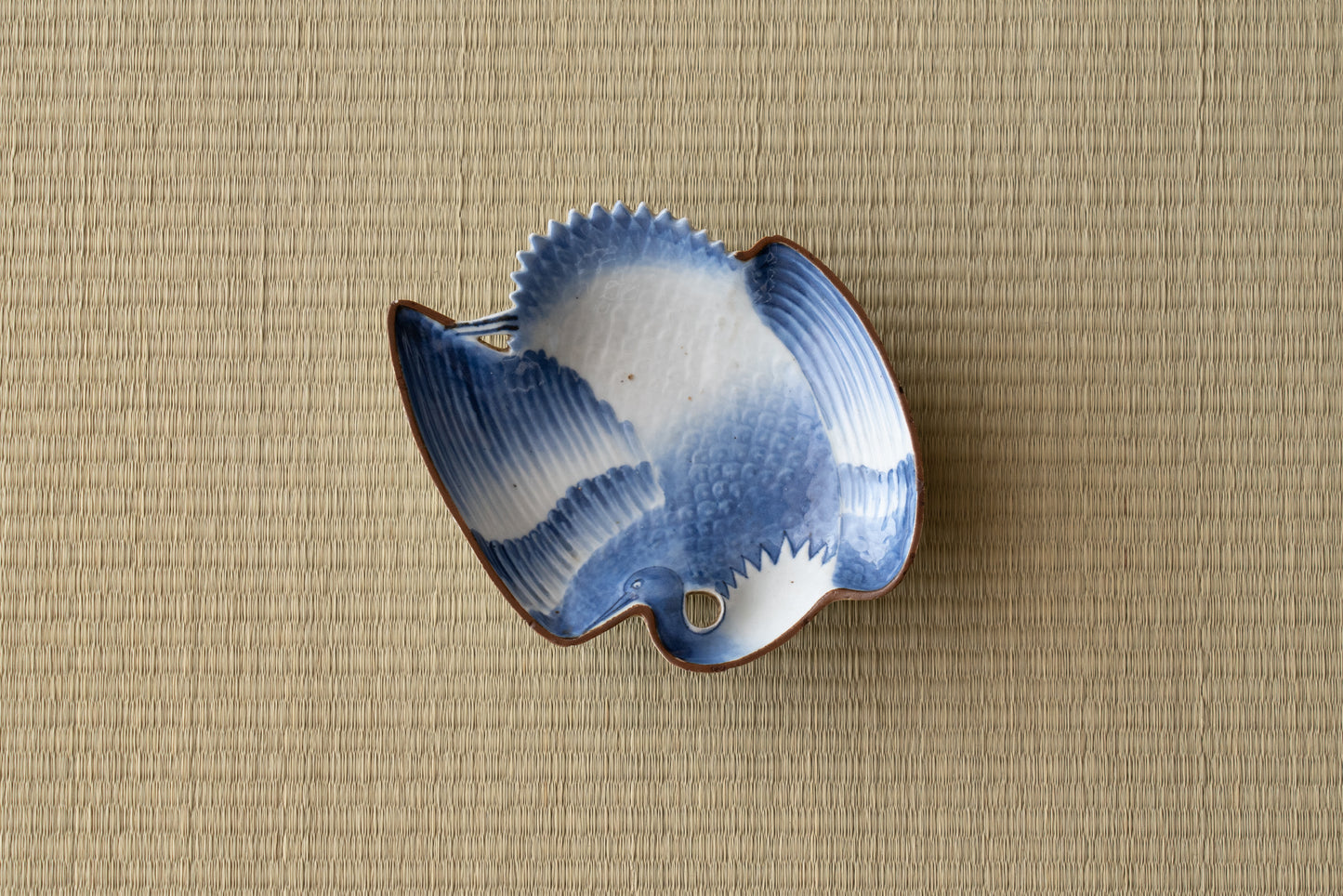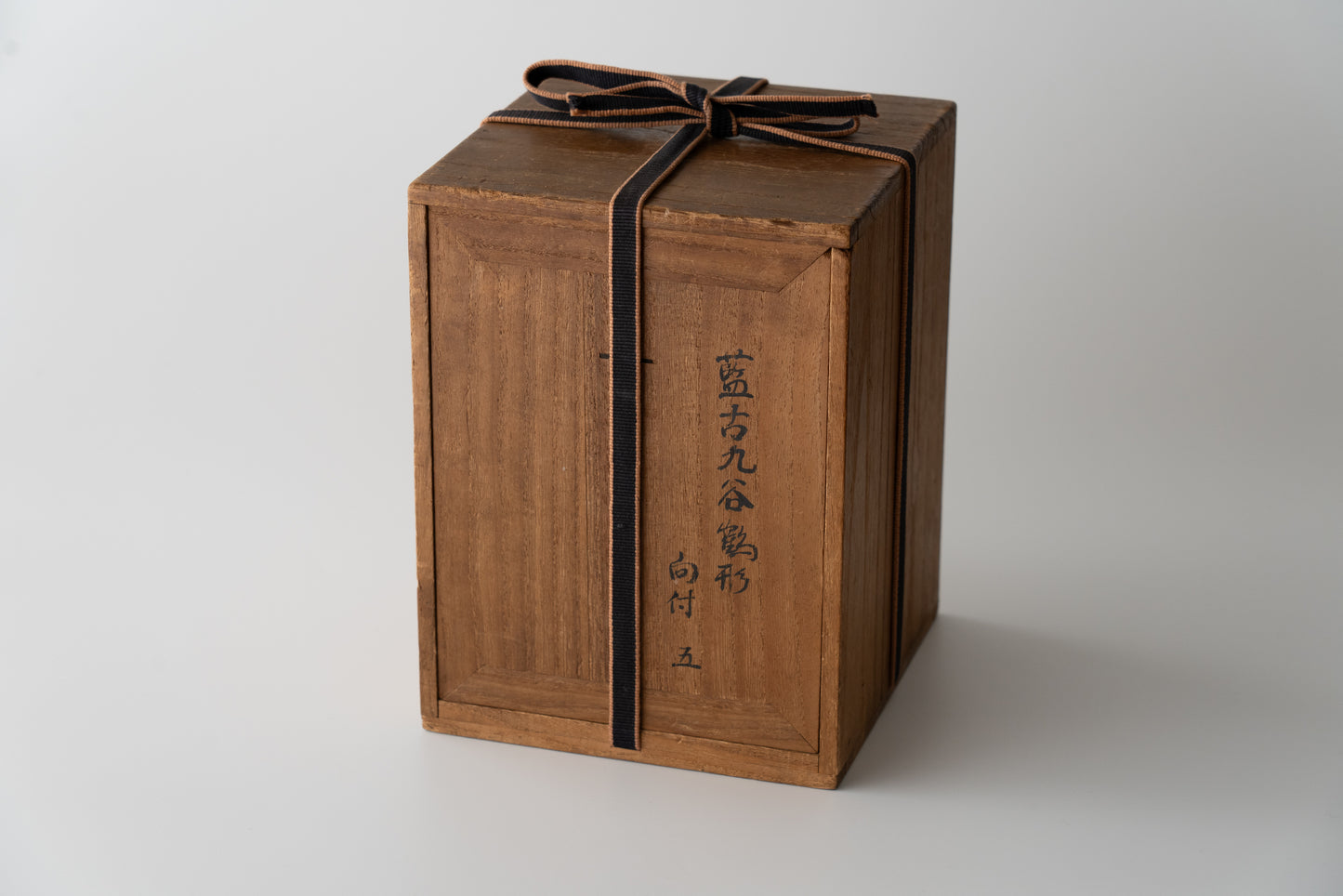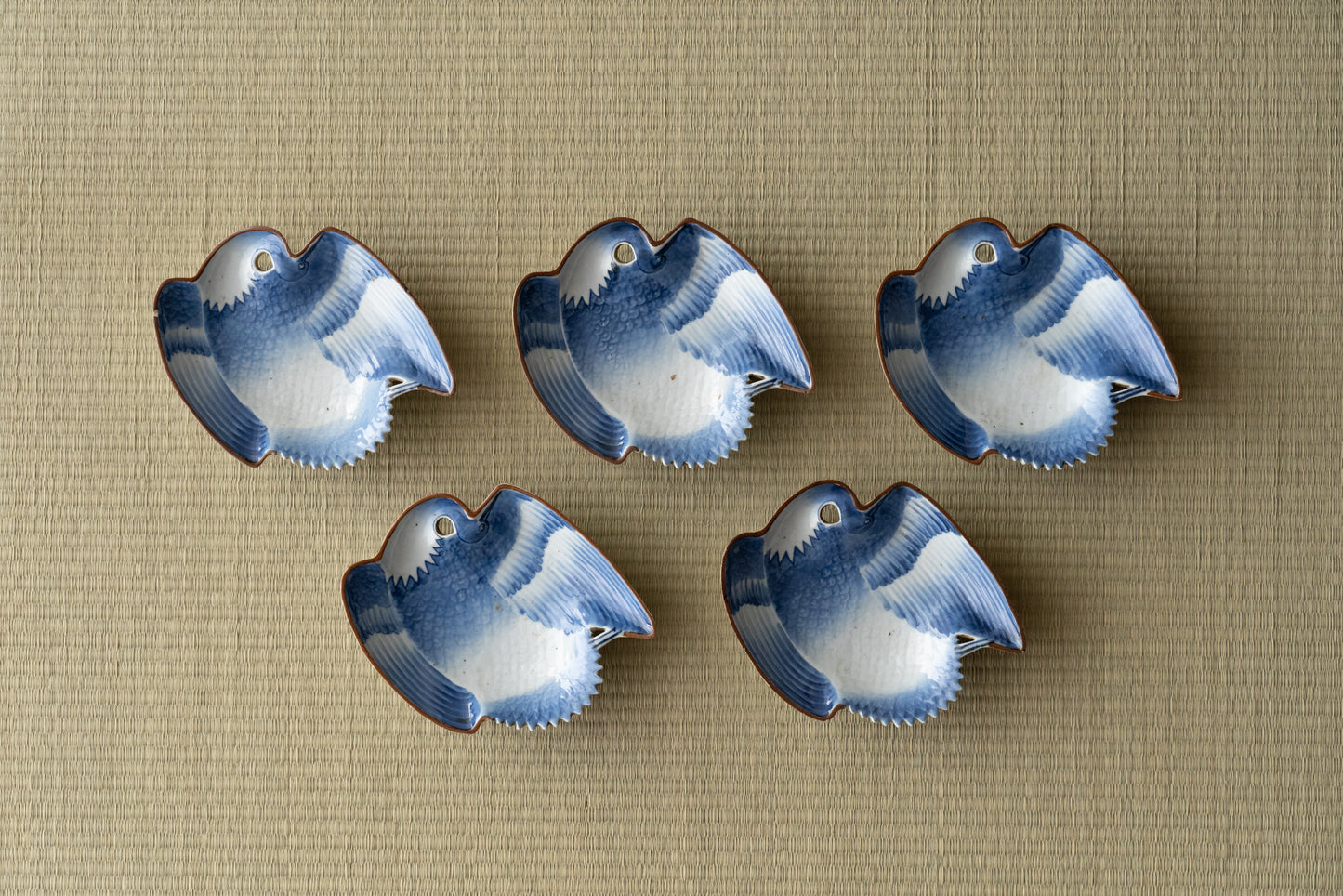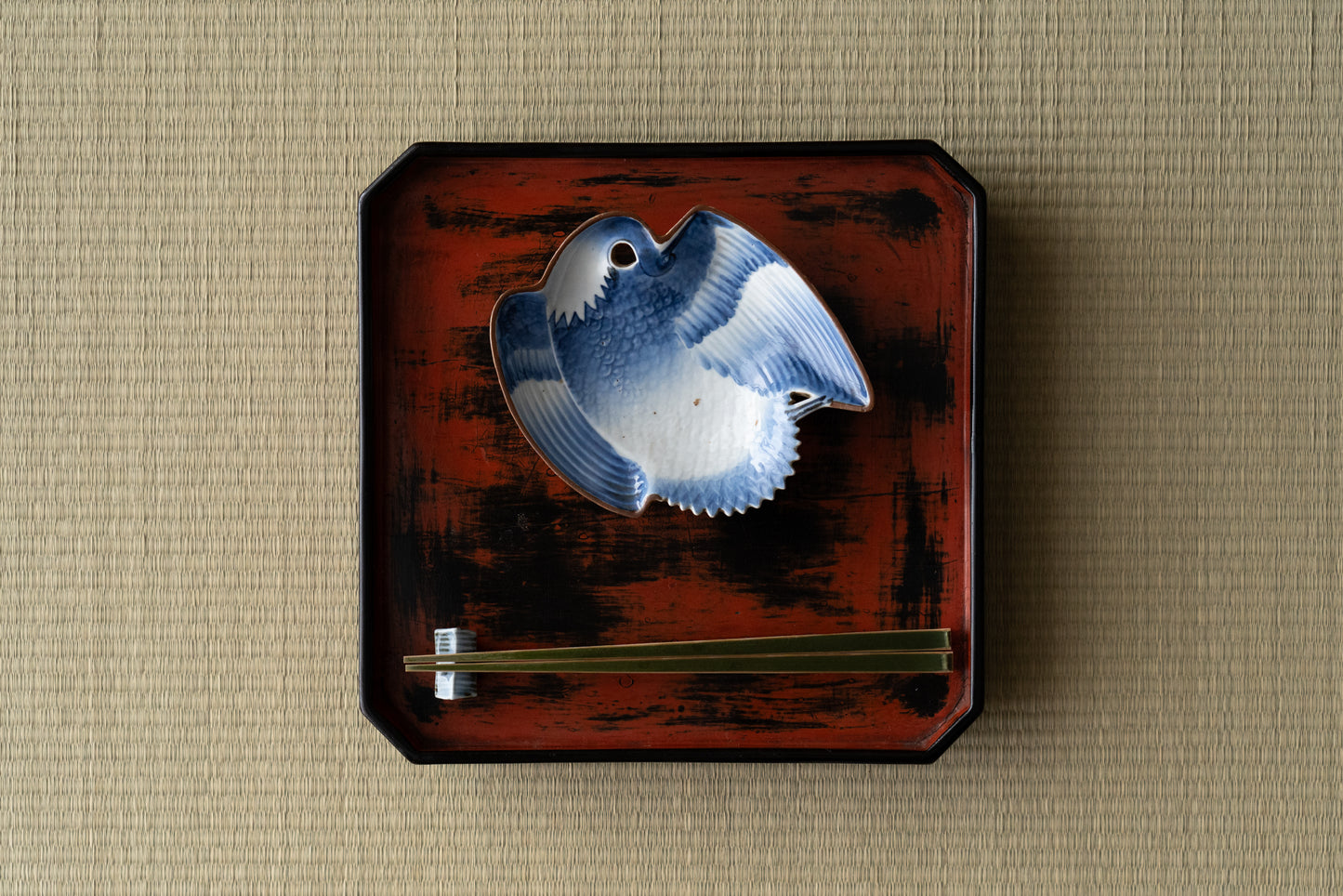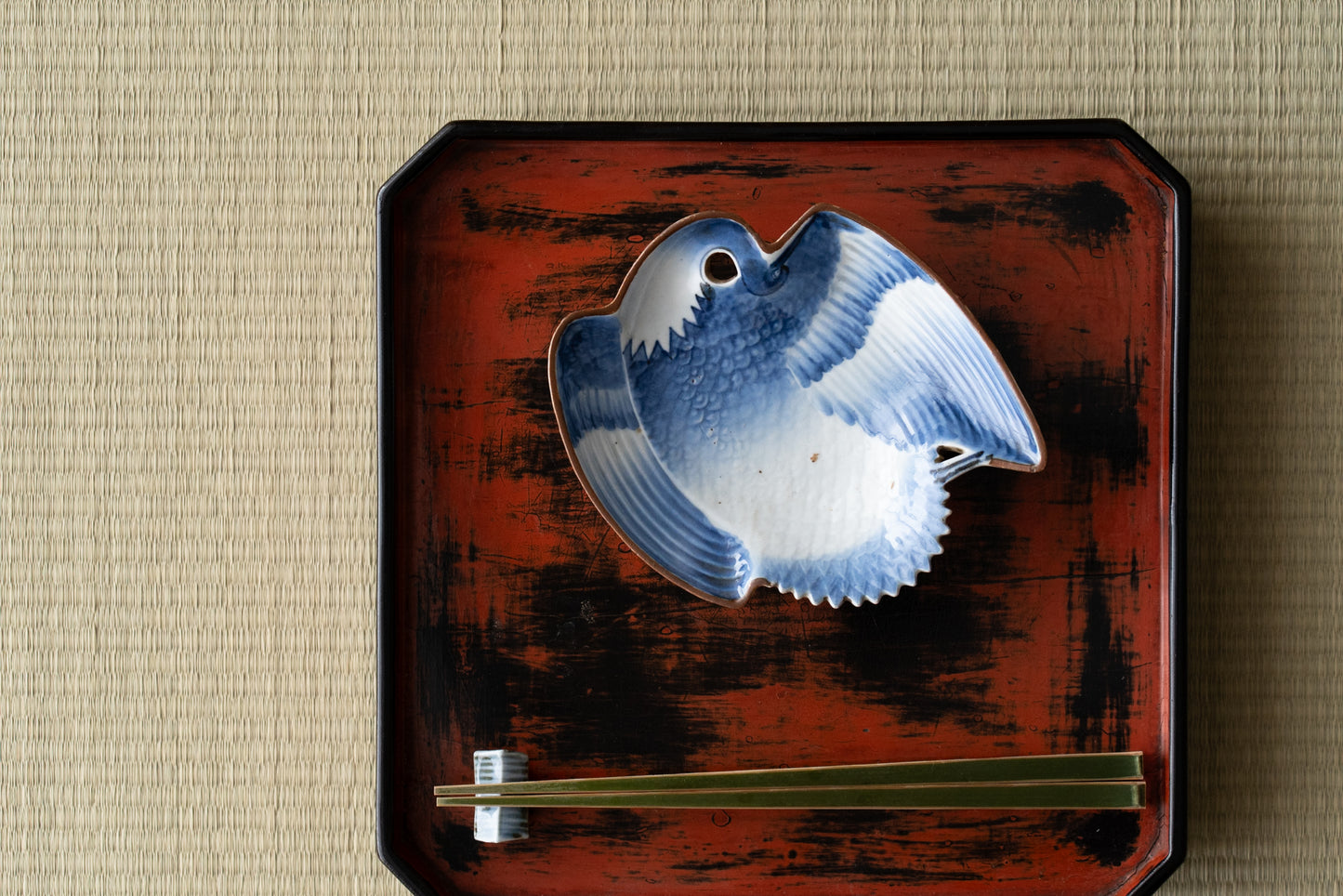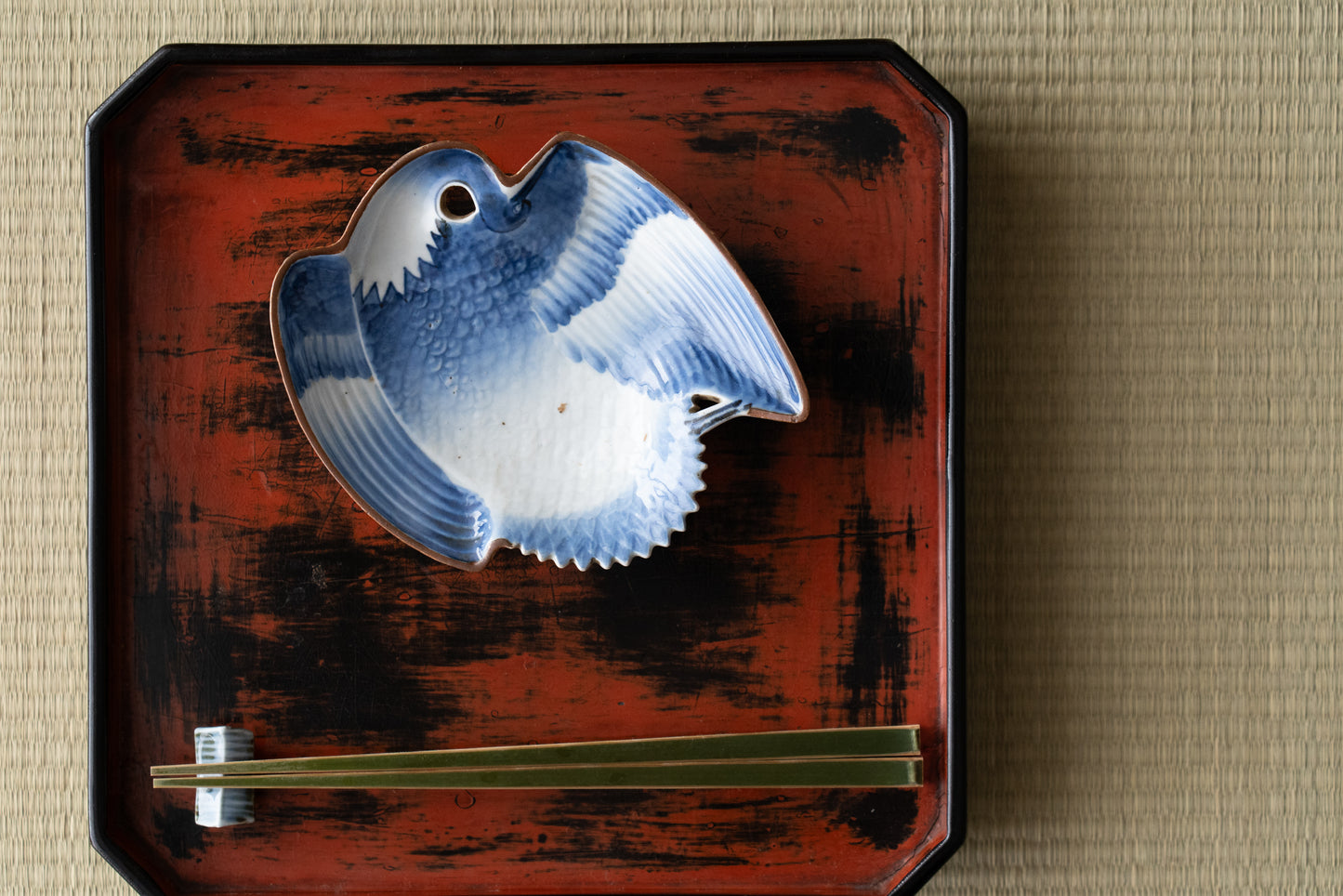A set of 5 crane-shaped mukozuke dishes, Imari ware, Ai-Kutani type
¥363,636
- Region/Era Japan / Edo period, late 17th century
- Size H3.4×W13.1×D12.6cm
- Condition There are a few small chips on each of the five pieces.
- Accessory paulownia box
- No. 42nk-086
Among the early Imari ware, there are dishes called "deformed plates" that were produced from the mid-17th century.
This piece dates from between the 1660s and 1680s, a time when irregularly shaped plates were becoming increasingly popular and more elegant and luxurious designs became possible.

As the name suggests, irregular plates are different from typical circular plates in that the plates themselves are made in various shapes.
A wide range of designs were incorporated, from simple designs such as diamond shapes and shikishi shapes to complex and intricate designs based on the themes of nature. Many of them were references to patterns from costume design books from the late 17th century. Due to their high level of design that captured the latest trends, they quickly became popular and were accepted as high-end tableware.
Even to modern eyes, the design is elegant and sophisticated. The Japanese view of nature and sense of beauty, which has continued from the Edo period to the present day, can be felt in the uniquely Japanese art form of "utsuwa."

This piece depicts the image of a crane at the moment it is about to spread its large wings. Its long neck moves wildly, creating a sense of dynamism in its design.
The surface is made up of raised and recessed feathers, with a layer of gradation in blue and white to express the richness of the feathers. This shape was very popular and was produced continuously, but this attention to detail is not seen in later works.

What gives an even more delicate impression is the openwork parts of the neck and wings. The openwork is circular to match the curved neck, and the tips of the wings and the tail are connected with rod-shaped parts.
There are many plates of the same shape that do not have this openwork. Naturally, plates with openwork are made more carefully and tend to have more skillfully painted pieces.

The edge is coated with iron glaze, and the weight-shaped base has the inscription "Made in the year of the reign of Emperor Shomu."

There are only a few small chips on the edges of each of the five pieces, but overall they are in good condition.

Ko-Imari deformed plates are based on Ko-sometsuke that was imported by order from Japan at the end of the Ming period, and on deformed Oribe ware plates from the Momoyama period, but have been developed with the addition of sensibilities unique to early modern Japan.
Pair it with a lacquered tray or a traditional tray with a rustic feel, such as Negoro. It brings out the unique charm of Japanese porcelain.
To pick up and see the actual item in the gallery.
Reservation